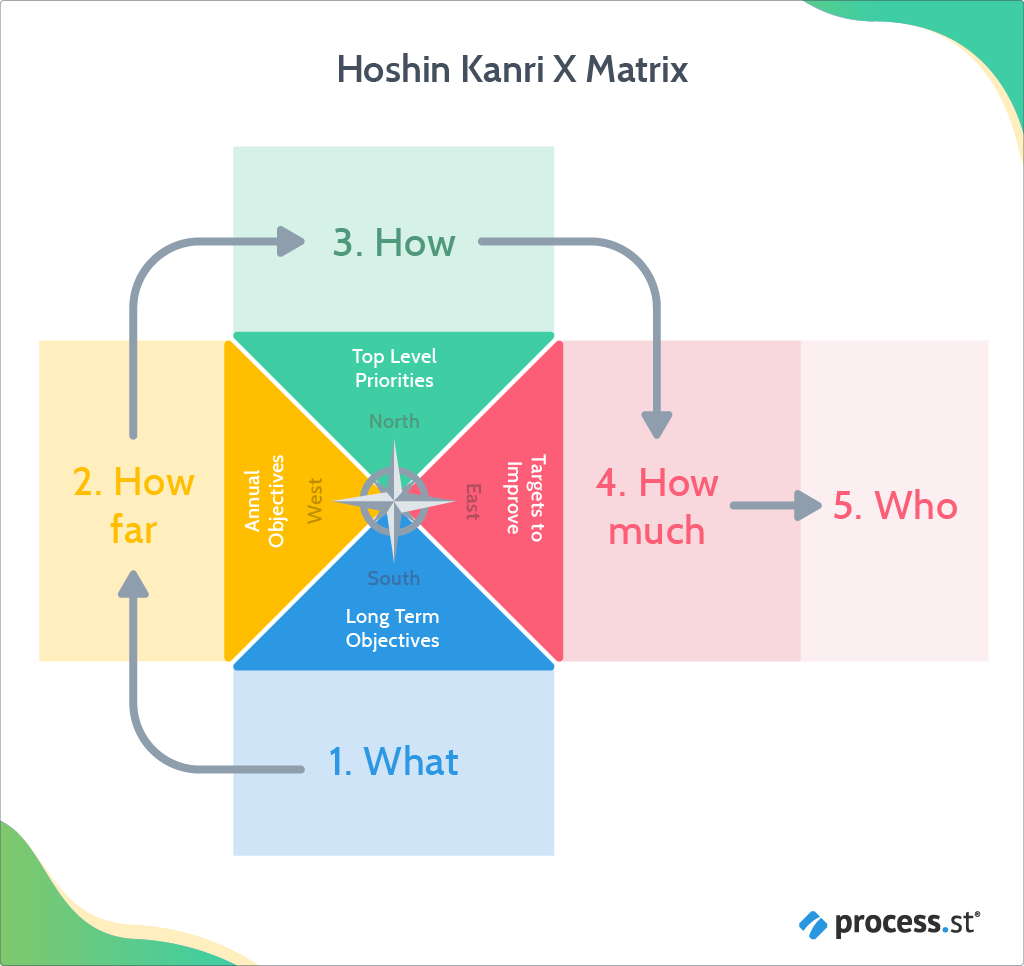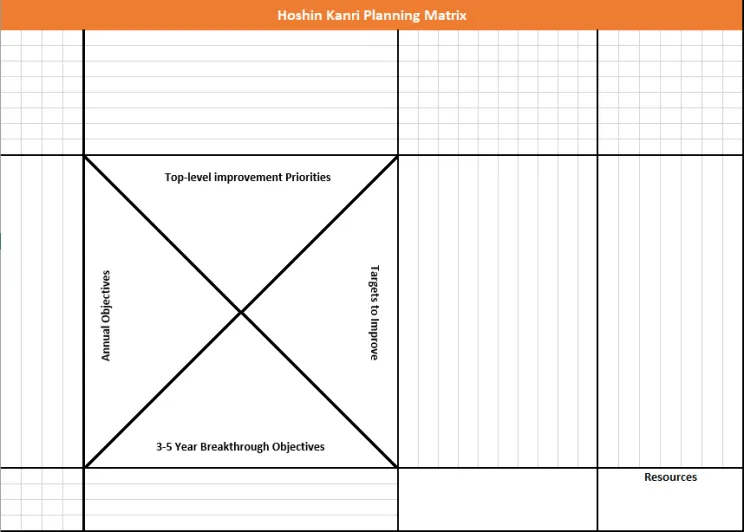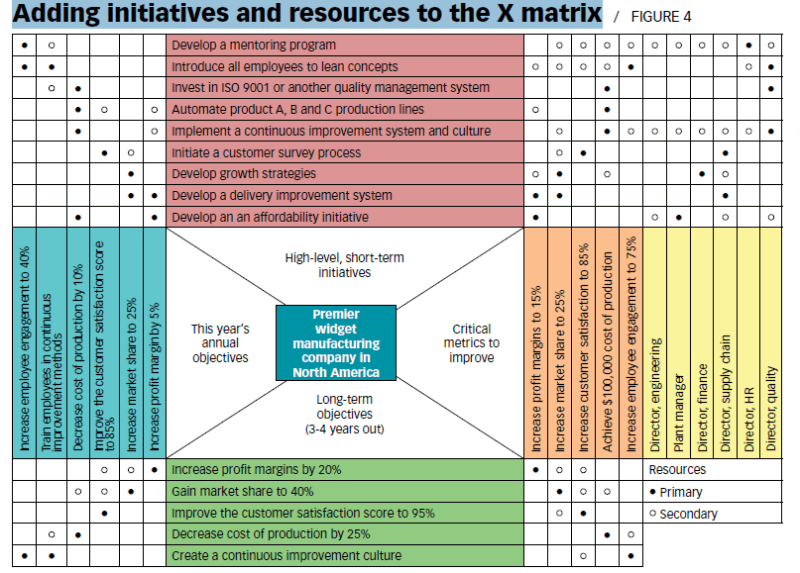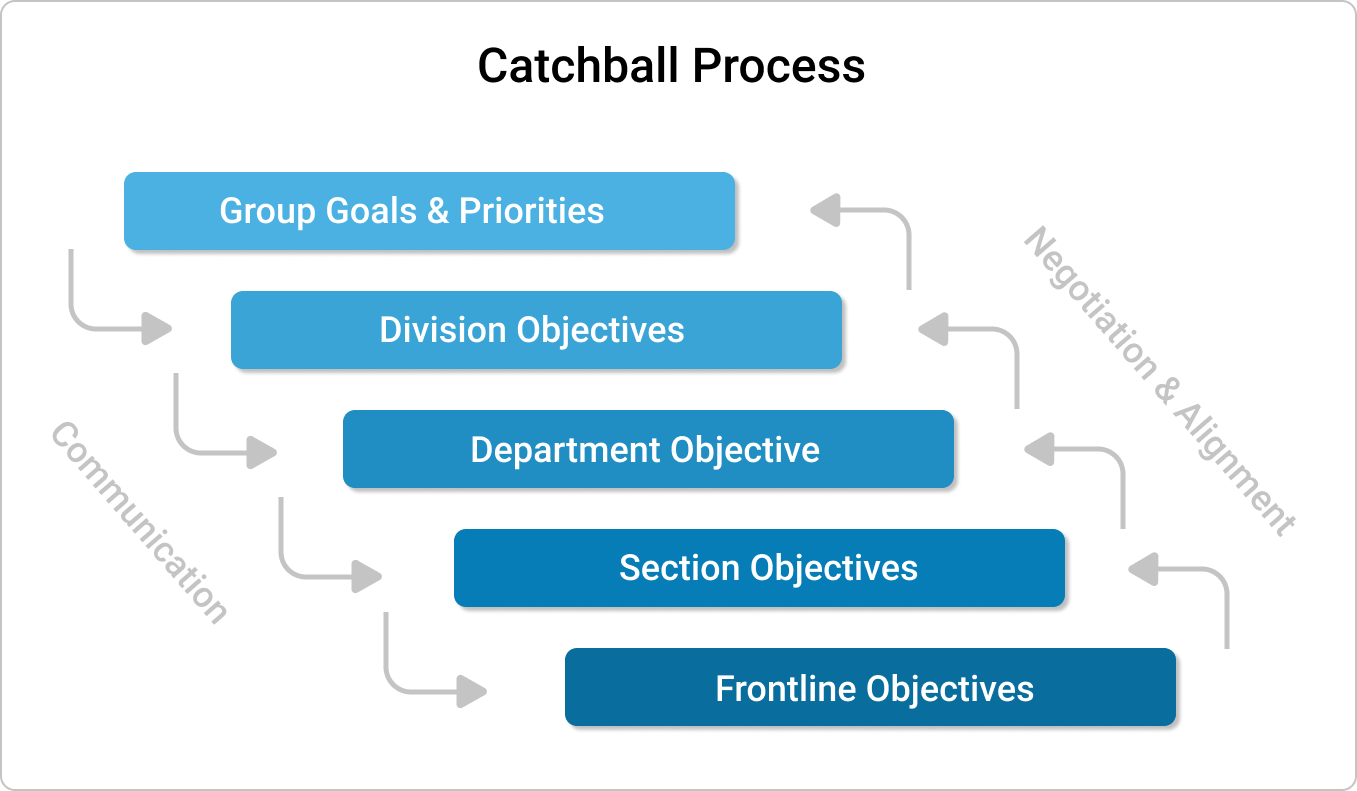Use this Hoshin Kanri Template to guide you through the Hoshin Kanri planning process. Hashin Kanri is a method used to implement new company goals and policies via a means that takes into account all organizational levels of a company.
The Hoshin Kanri methodology was developed in Japan in the late 1960s. It is a strategic planning process, that focuses on team-wide continuous improvement and learning.
Hoshin = Policy/direction
Kanri = Management
The methodology is now implemented in institutions developing new management systems and concepts such as Lean Management and Six Sigma. It is used to implement new goals and policies within a company.
The method takes your business objectives and breaks these objectives down into smaller objectives, which are broken down further into projects and tasks. These projects and tasks are then distributed from top-to-bottom in your organization.
The Hoshin Kanri method is not complex but each step is important for creating a plan of action that can be effectively executed in the time-frame expected.
Goals are aligned within your team, making sure everyone stays on track.
So why is Hoshin Kanri such a powerful approach for strategic planning?
We understand why the Hoshin Kanri method is so useful when we consider the benefits this methodology brings. Hoshin Kanri will:
- Align everyone to a few high-impact objectives, whilst also maintaining accountability between individuals for their commitments,
- Identify root causes for corrective action so the organization can learn and improve the planning process,
- Standardize reporting and presentation format whilst also reducing the number of ad-hoc reports being generated.
There are 7 steps to the Hoshin Kanri planning process which are as follows:
- The development of vision, mission, and key metrics within the organization,
- The identification of breakthrough objectives, which are vital and significant changes needed for the organization to achieve its vision,
- The setting of annual improvement plans, with the flexibility to set short-term plans such as quarterly objectives,
- The deployment of annual objectives top-to-bottom through a process called catch-ball, which details how the objectives will be shared via two-way communication,
- The review of results on a weekly, monthly and annual basis, utilizing tools such as a bowing chart,
- Problem-solving, step 6 looks at objectives missed from step 5, to identify and solve the issues,
- Reflection and learning, taking the idea of constant growth and improvement.
How to use this checklist
In this checklist, you will be presented with a set of specialized questions given as form fields. You are required to populate each form field with your data.
With this in mind, certain stages will require approval utilizing Process Street's approvals feature.
Other features included in this template are:
- Stop tasks - To ensure task order.
- Dynamic due dates - To make sure your initiative is reviewed on time.
- Role assignment - To delegate tasks within your team ensuring your supervisors are appropriately assigned to the review tasks.












